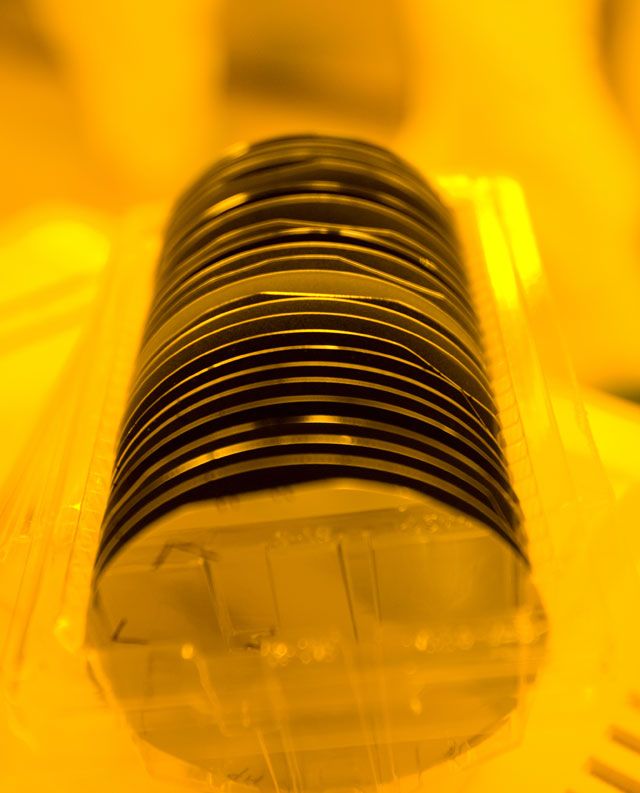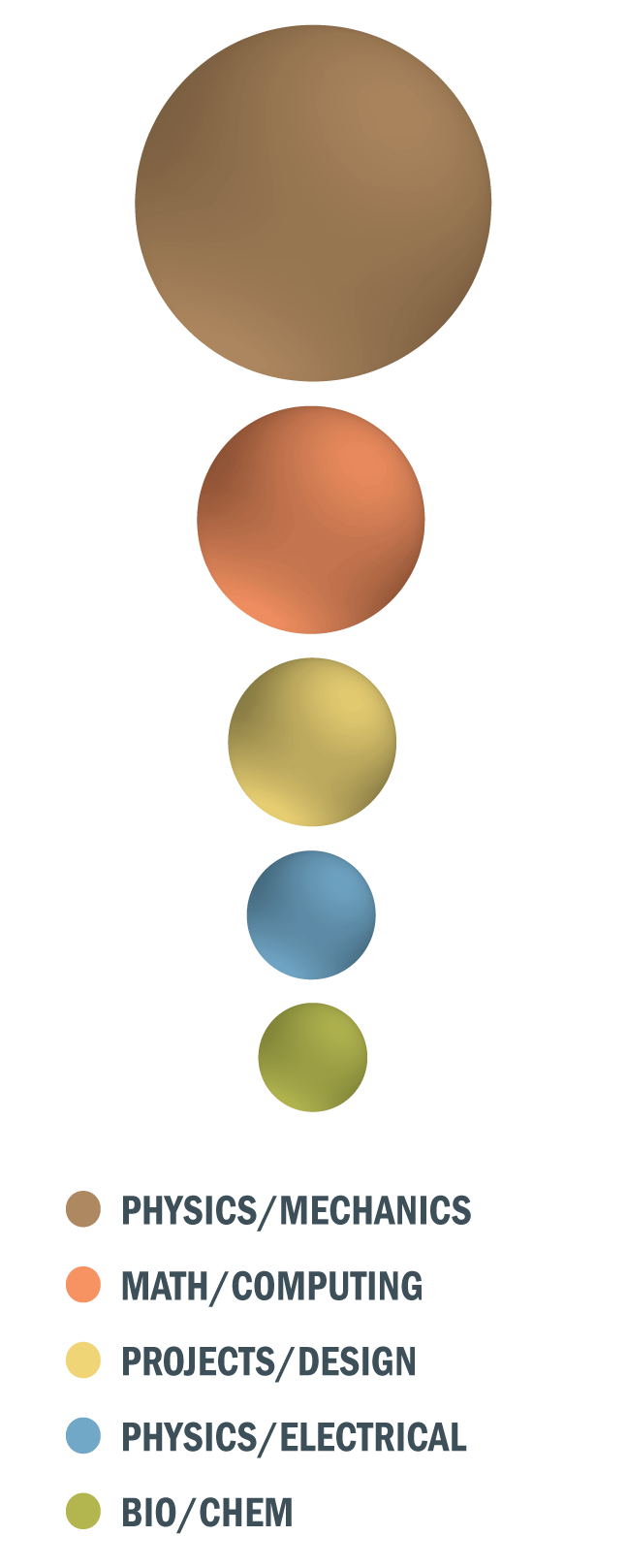The manipulation and creation of material with new characteristics and properties is one of the most exciting areas in engineering today. Engineers in this area create new particles by controlling material composition at the molecular and atomic level, where it is measured in nanometers (one nm equals one one-billionth of a meter), hence the term "nanotechnology."
The materials they create provide cleaner, safer and smarter products for the home, environment, computers, communications, medicine, transportation, agriculture and industry in general. Advances in the field have already made the paint on your car more protective, improved the biocompatibility of artificial joints, facilitated the dissolving of oral medication into your bloodstream, and kept stains from taking hold on your new living room carpet.
Focus Areas
Engineers in this field study the factors that cause materials to display certain properties, seek to improve existing materials and search for new materials with enhanced properties that can be used in communications, biomedicine and a host of other application areas.
Lehigh faculty are internationally renowned in this area, including specific expertise in microscopy as well as application areas such as optical engineering, metal forming, biomaterials and polymer science.
Students in this area:
- Process and analyze ceramics, glasses, metals, alloys and polymers, as well as electronic and optical materials
- Characterize the mechanical, structural, chemical, optical and electrical properties of materials
- Apply materials to such issues as energy, life sciences, microelectronics and devices, large structures, telecommunications and homeland security
Just up in size from the nanoscale is the microscale, where engineers work in microelectronics, applying advanced materials and technologies to integrated circuitry, communications networks, computers and similar devices.
Research and Resources
Lehigh has one of, if not the, top academic microscopy centers in the world. This provides our students and researchers a virtually unmatched capability in determining the characteristics of materials at the very smallest scale—a tremendous resource for students interested in nanoengineering. Lehigh's Center for Advanced Materials and Nanotechnology (CAMN) boasts some of the most powerful electron microscopes available—so advanced that we can examine a material's structure atom by atom, and then take what we've learned and produce wires, "islands" on a substrate, or tiny particles with specific properties. Other facilities include labs for microelectronics research, optical materials and technologies, and microelectro-mechanics.
Some of the projects that represent Lehigh's significant endeavors in this area include the following:
- A team of faculty and student researchers is working to find ways that specially engineered biocompatible glass can be used to help heal broken bones
- Nanoparticles made at Lehigh have reduced contaminant levels in sites in New Jersey and Florida by 96 percent over a four-week period
- Lehigh engineers are working with NASA to design and test the microshutter system that forms the heart of the James Webb Space Telescope, the successor to the Hubble.
Example Majors
Chemical and Biomolecular Engineering
Electrical Engineering
Civil Engineering
Materials Science and Engineering
Mechanical Engineering


